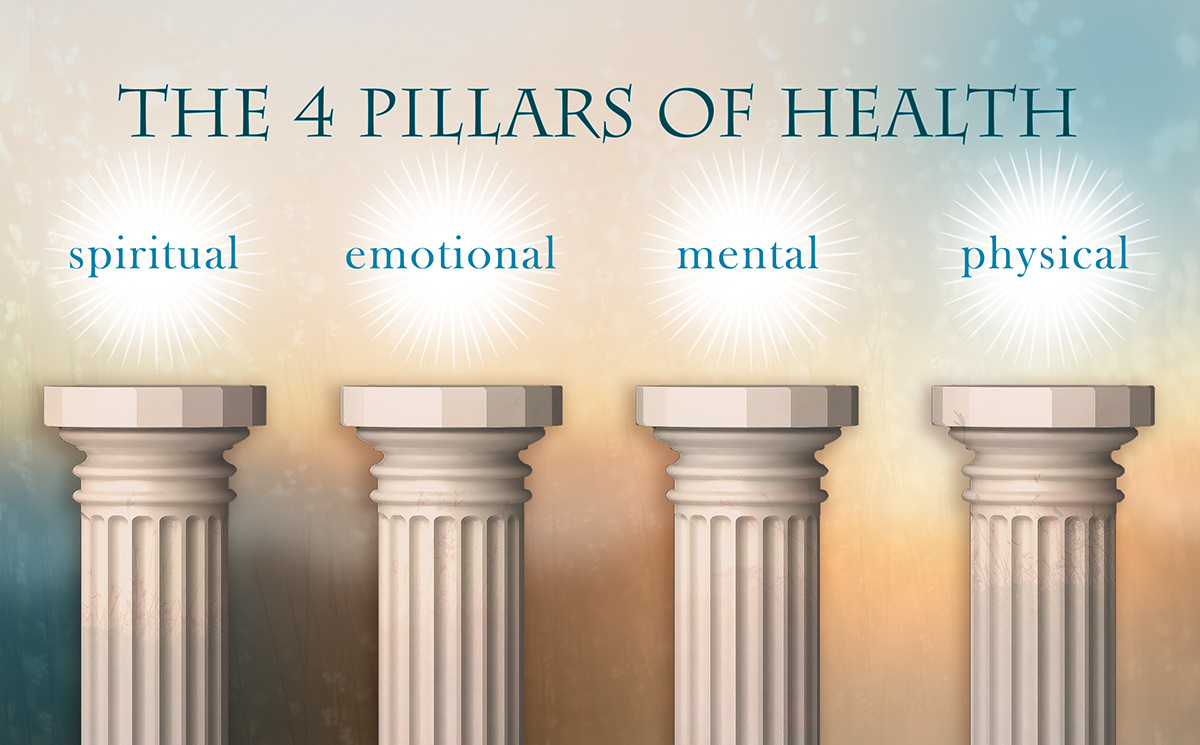The concept of the four pillars—physical, mental, spiritual, and emotional—is often used to represent key dimensions of well-being and personal development. Each pillar addresses a different aspect of an individual’s overall health and contributes to a holistic understanding of one’s self. Here’s a brief overview of each:
- Physical:
- Definition: The physical pillar pertains to the body’s health and well-being.
- Components: It includes aspects such as nutrition, exercise, sleep, and overall physical fitness.
- Importance: Physical health is fundamental to overall well-being. Regular exercise, a balanced diet, and sufficient sleep contribute to increased energy levels, better immune function, and a reduced risk of various health issues.
- Mental:
- Definition: The mental pillar encompasses cognitive and intellectual well-being.
- Components: It involves activities that stimulate the mind, such as learning, problem-solving, and critical thinking.
- Importance: Mental well-being is essential for cognitive function, creativity, and resilience. Engaging in activities that challenge and stimulate the mind contributes to overall mental health.
- Spiritual:
- Definition: The spiritual pillar involves a sense of purpose, meaning, and connection to something greater than oneself.
- Components: It includes practices like mindfulness, meditation, or engagement with personal beliefs and values.
- Importance: Spiritual well-being contributes to a sense of purpose and inner peace. It doesn’t necessarily refer to religious beliefs but encompasses a connection to values, ethics, and a broader understanding of life.
- Emotional:
- Definition: The emotional pillar focuses on understanding and managing one’s emotions.
- Components: It involves self-awareness, empathy, and effective communication.
- Importance: Emotional well-being is crucial for building healthy relationships, managing stress, and coping with life’s challenges. Developing emotional intelligence allows individuals to navigate their feelings and interactions with others more effectively.
Balancing attention to each of these pillars is often considered essential for achieving overall well-being and personal growth. Neglecting any one pillar can have a cascading effect on the others. Individuals may find that focusing on the interplay between these dimensions leads to a more comprehensive and fulfilling life.
Share this:
- Click to share on Facebook (Opens in new window) Facebook
- Click to share on LinkedIn (Opens in new window) LinkedIn
- Click to share on X (Opens in new window) X
- Click to share on Tumblr (Opens in new window) Tumblr
- Click to share on Pinterest (Opens in new window) Pinterest
- Click to share on WhatsApp (Opens in new window) WhatsApp
